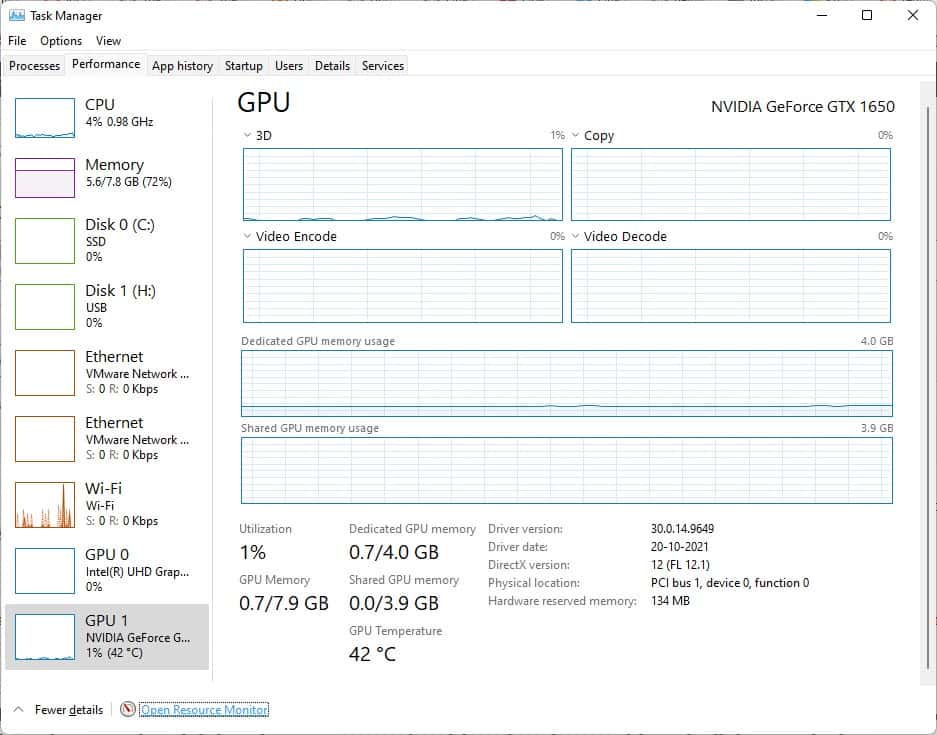How to check GPU temperature in Windows 11
When you are playing games on your computer or performing a resource-intensive task like a virtual machine or video editor, you may notice something, or more likely hear a noise. The fans in your system may start spinning like crazy, this is quite normal.
This is not a problem, this is how PCs deal with changing thermal levels. The fans help control the airflow in the computer, to prevent the graphics card and processor from overheating, which in turn prevents performance limitation.
How to check GPU temperature in Windows 11
But if you are worried about the computer and want to monitor system performance in Windows 11, there is a very easy way to do it. The best part is that you don’t need a third-party tool for this job. Simultaneously press Ctrl + Shift + Esc and Task Manager should appear. Windows 10 users may be aware of this basic functionality of the operating system. Switch to the performance tab and click on the GPU option in the sidebar. The right pane of the Task Manager will change to display graphs indicating the recent performance level of the graphics card.
Note: If you have installed a dedicated graphics card, you will need to select the correct GPU from the sidebar.
The section at the bottom shows some readings, these show GPU resource usage including GPU temperature, memory usage, driver version, etc. That’s all you really need to keep tabs on your graphics card.
GPU temperature will rise when playing games, watching videos, etc. There is nothing to worry about, this is what it is designed for. However, if you find the temperature levels to be higher than they normally are in other games, check your computer’s vents and fans for dust. Lowering graphics settings in games and closing programs running in the background can also help you control thermal conditions and may even give you a slight FPS boost. If nothing helps, you might want to investigate if it’s the game or graphics driver that may be causing the problem. Games that are poorly coded or have some sort of DRM can put a strain on the CPU and GPU.
Windows 11 Task Manager provides a decent way to monitor your computer’s hardware, but it’s pretty basic. If you need something more, you can use third-party programs for the task. My recommendation is to use Open Hardware Monitor, it’s an open source tool that comes in a portable archive. You can also try other options like NZXT CAM, Libre Hardware Monitor, MSI Afterburner, HWMonitor or Sidebar Diagnostics.
A word of warning, I have never had a good experience with MSI Afterburner. Even without overclocking or undervolting or other shenanigans like that, I had crashes and blue screens occurred on my desktop. Strange as it might sound, these problems went away after I stopped using the program. You may have a completely different experience with it, but if you have any issues, try removing the app to see if that helps resolve the issue.
I think it would be cool if Windows 11 showed GPU and CPU temperature in the Game Bar widget. If the task manager can do it, surely the widget can do the same? What do you use to monitor the temperature of your GPU and CPU?
Summary

Article name
How to check GPU temperature in Windows 11
The description
Are you a gamer? If so, you might want to monitor your computer’s performance. Learn how to check GPU temperature in Windows 11.
Author
Ashwin
Editor
Ghacks Technology News
Logo

Advertising
